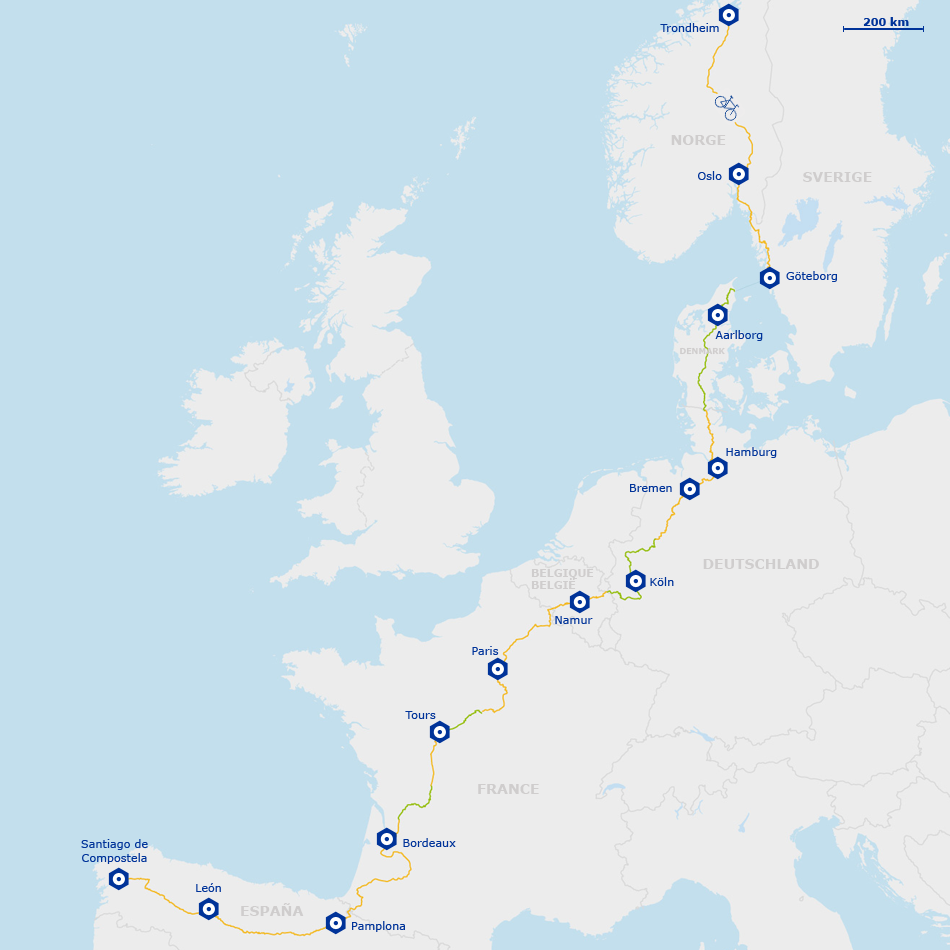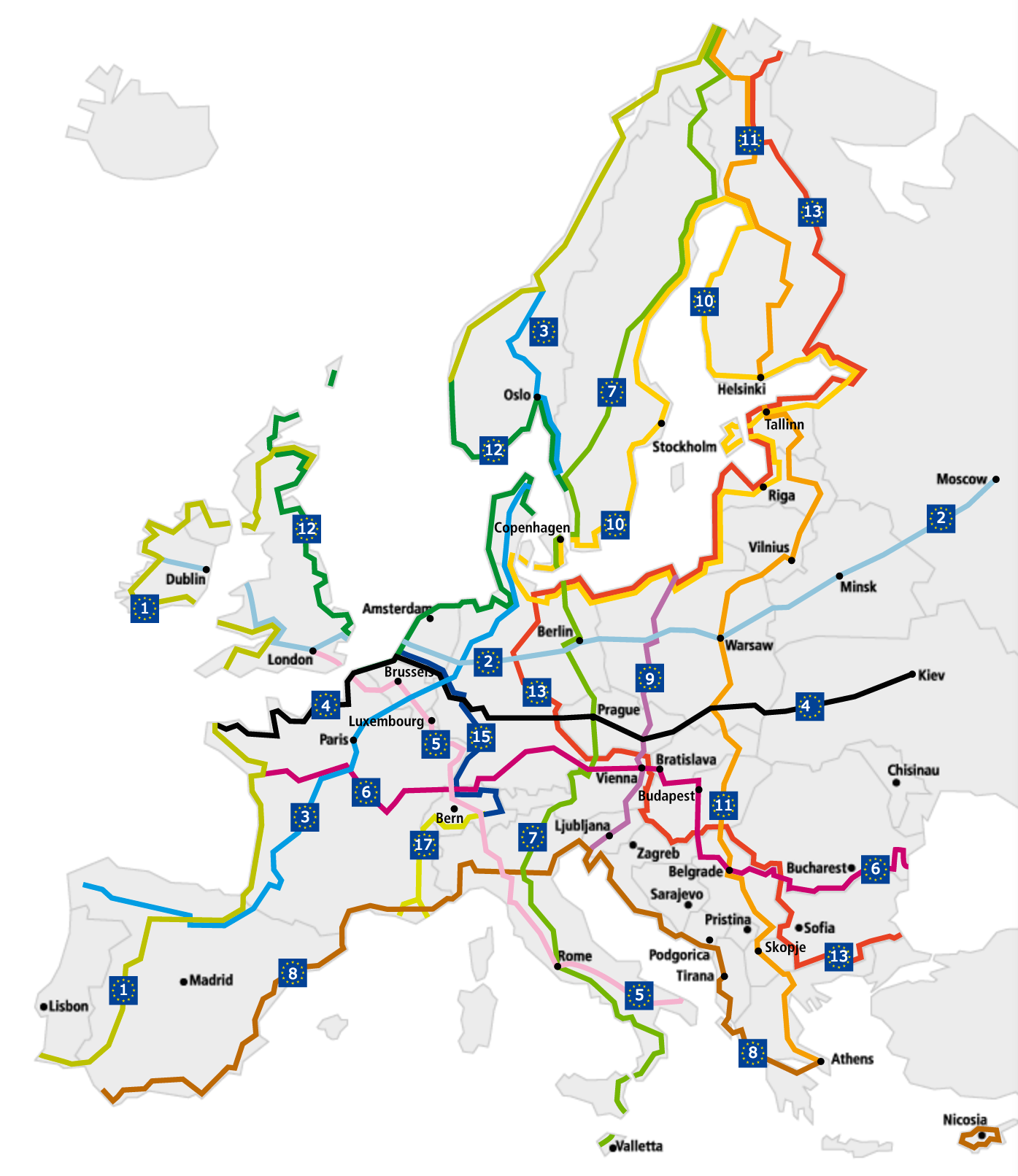The Pigrims' Route
This summer, I plan to do a big ride on the cycle route The Pilgrims’ Route, also known as EuroVelo  , from Trondheim in Norway to Santiago-de-Compostella in Spain.
, from Trondheim in Norway to Santiago-de-Compostella in Spain.
I really like travelling by bike: it has the right speed to make long distance travels. You can stop at any time if you see something interesting, without thinking about where to park, how not to block the traffic or whether you are going to make it to the the next gas station. In the same time, you are not bound to planning everything, as when you are a pedestrian. You can improvise and an additional 10 km is always possible, if for instance you believe the hotel you planned to sleep at is not worth a night under the tent into the wild.

The Pilgrims’ Route itinerary. Green parts are supposed to be properly realised whereas orange depicts planned sections. However, the EuroVelo website as well as the regional authorities slightly lag behind what is realised locally. For instance, the  association has just released a guide for the southern part of the itinerary in France, between Tours and Pamplona.
association has just released a guide for the southern part of the itinerary in France, between Tours and Pamplona.
I did not choose route  randomly. The main reason for my choice is that it is the only route in the EuroVelo network which goes through Paris. I have lived in Paris many years, and I miss all my friends there. Additionnally, Paris during the summer is lovely: all cars are gone, because Parisians themselves are on holiday.
randomly. The main reason for my choice is that it is the only route in the EuroVelo network which goes through Paris. I have lived in Paris many years, and I miss all my friends there. Additionnally, Paris during the summer is lovely: all cars are gone, because Parisians themselves are on holiday.
An other reason for choosing route EuroVelo 3 (and not, for instance, route  , from Nantes in France to Constanța in Romania, which is following the Loire river just over 100 kms south of Paris) is my will to “go south” after a few years living in the cold Copenhagen. Starting relatively close to the Artic Circle in July, I will perform my own form of migration.
, from Nantes in France to Constanța in Romania, which is following the Loire river just over 100 kms south of Paris) is my will to “go south” after a few years living in the cold Copenhagen. Starting relatively close to the Artic Circle in July, I will perform my own form of migration.

The EuroVelo network. EuroVelo “is a network of 15 long distance cycle routes connecting and uniting the whole European continent.” It is envisaged to be substantially complete by 2020. (source, 2016/06/03) East-west routes receive even numbers from 2 to 12 and north-south ones receive odd numbers from 1 to 15. The Pilgrims’ Route, in light blue, has number 3.
Lastly, I also wanted to visit Jutland, the “continental Denmark”, and it happens that route  actually runs from Frederikshavn in the north of Jutland, to Åbenrå in the south. I know many Copenhageners who never go to Jutland, or to only a few towns there. Knowing a country better than (most of) its citizens feels like a small victory. And I may even have the occasion to visit Legoland, which stands on a fair 10 km detour from the way.
actually runs from Frederikshavn in the north of Jutland, to Åbenrå in the south. I know many Copenhageners who never go to Jutland, or to only a few towns there. Knowing a country better than (most of) its citizens feels like a small victory. And I may even have the occasion to visit Legoland, which stands on a fair 10 km detour from the way.
You will be able to follow my adventures on my blog A Ride on The Pilgrims’ Route. I also intend to help you with planning your own bike trip. Since I am just starting, for now, you will mainly find the GPS tracks. But that is already something, isn’t it?